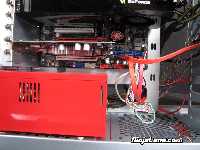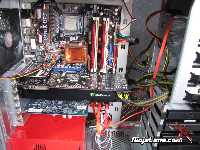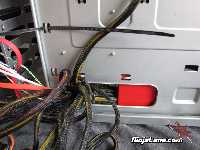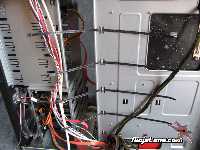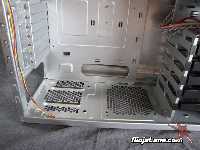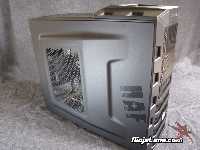After careful consideration I have decided to transfer all hardware review activities to a new domain. I purchased Hardwareasylum.com in 2012 and have been working hard to build a new and improved Ninjalane on that domain. If you are reading this you have reached one of the archived articles, news, projects and/or reviews that were left behind during the site migration.
Please update your bookmarks and be sure to visit the new and improved Ninjalane at Hardwareasylum.com
Cooler Master HAF 922 Case Review
Author: William West
Published: Tuesday, May 12, 2009
Case Cooling System Cont.
Cable routing is one of the more difficult things to do in any system build and many of us dread having to run cables because we remember how painful it has been in the past. Well Cooler Master has really done their homework and given us some excellent cable routes.
Inside this channel are small loops for zip ties and a computer neat freaks dream come true. Not only is it to keep things tidy, but also to help promote good airflow. With having the cables out of the way the airflow across the motherboard is improved and left undisturbed. Tiding up also helps in the water cooling area as well by making room for all of the additional gear you'll need such as pump and other parts.
Here are a few more shots of the cable routing being used.
This helps give an idea of just how to use these loops for cable management if you had no idea.
Now it is time to look at the extra optional air cooling placements on the HAF 922. At the bottom of the HAF 922 is a place for either a 140mm or 120mm fan to be mounted. This area for a fan has always been a sore spot for us here at Ninjalane and any fan placed here is nothing more than a waste. On a good note Cooler Master didn't install a large fan so your PSU installation wont' be blocked.
The motherboard side door features an optional location for either two 120mm fans or one large 200mm fan. This setup can either be set to push, or pull air and is designed to help vent the area directly above the motherboard and expansion card region.

